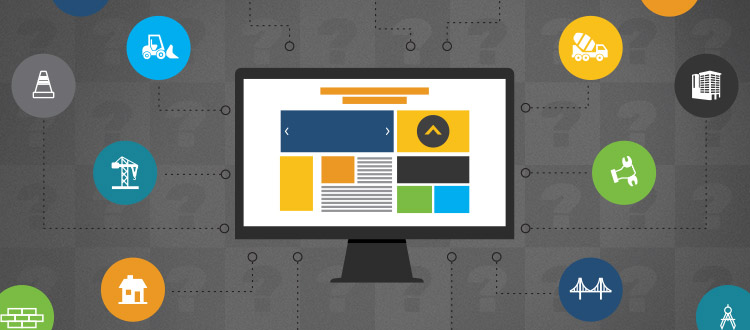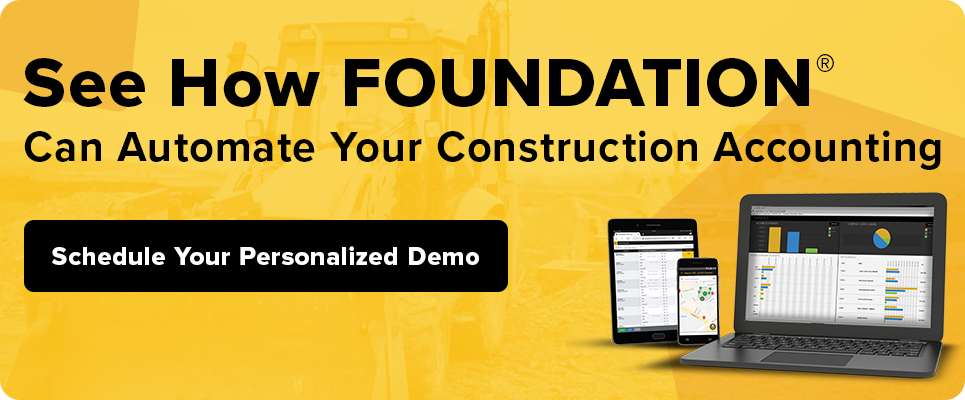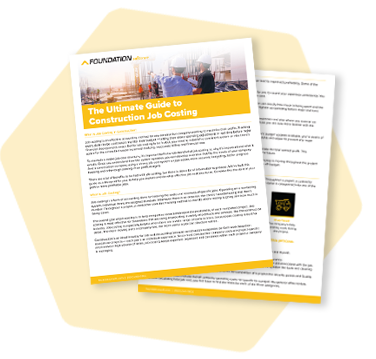
Let’s say you’ve decided to change accounting software for your construction business. Do you have to do it at year-end? Is it ever OK to change mid-year? If getting new construction accounting software is the right move for your business, there’s no single right answer about when — but certain times can make it easier on your business to implement a new accounting system successfully. Here are some considerations to help you plan your timeline.

Do you have to start on January 1?
There are several advantages to starting January 1 in a new accounting system, but there’s no requirement to do so. First, most companies’ fiscal year begins on New Year’s. For them, the benefit is that they won’t have to carry over part of the year’s finances as a lump sum. At year-end, they’ll have 12 months of detailed history all in one place.
Second, there’s no payroll history to carry over into the new application. Regardless of when your own fiscal year turns over, payroll reporting always restarts after year-end. That’s part of the reason why businesses often see a January 1 changeover as the cleanest. However, as we’ll see, contractors can also make a clean transition with their books at other points on the calendar.
Finally, for many contractors, winter is the slowest time of year when it comes to financial data coming in from projects. A lot of construction companies take advantage of the break in their job cycles to change software in their back office. That said, keep in mind holiday schedules and the time constraints that year-end accounting procedures place on your staff each winter. These can cause obstacles to the best-laid plans for a January 1 transition.
What’s the best time of year to change accounting software?
Look at the ebbs and flows of your business. That includes your fiscal calendar, your staff schedules and your project cycles. If you’re a seasonal contractor in the Northeast or Midwest, winter might be a less hectic time for your construction company. In contrast, southern or California weather might spread your projects out year-round. In that case, mid-year implementation might be more feasible than if your busy season runs April to September.
Don’t feel locked into just one option until you form a game plan with your vendor and CPA and commit to it. The start of Q2 (April 1) or Q4 (October 1) can also be great benchmarks. For most contractors, these dates are outside the heart of busy season. Meanwhile, they still provide a clean tie-out to your quarter before moving your data. October 1 has a particular advantage, with three full months to prepare for a smooth year-end — plus, because it’s a less well-known transition time, vendors will often have more resources on hand for you than at year-end.
The important thing is to figure out when you’re going to be ready and how much time you need in order to make the transition. Your vendor can create a game plan with you to calculate the best date to target from there — and help you meet it.
How long does it take to change accounting software?
In an ideal world, implementing a base job cost accounting system could take three to four months from purchase. A large ERP could take six months to a year. But, that depends on several factors. Count on more time for:
- larger companies
- additional modules
- complex payroll or reporting requirements
- adopting new job costing
- introducing new controls (like inventory management)
- bookkeeping that needs to be cleaned up
In contrast, imagine a large contractor who’s simply moving from one base system to another with the help of their construction CPA. With clean data, no add-ons and successful change management, they might be up and running in two or three months.
Remember, no results are typical. Your business really is unique.
When thinking about implementation time, it needs to include set up, training, testing, making adjustments and getting buy-in from the field. Making accounting software work is a long-term commitment, and your vendor will help you along the way.
When is the best time to buy accounting software?
Whenever you decide to buy, leave enough time to prepare and implement successfully. Don’t hurry through the process. Getting to know your vendor, taking advantage of all their available resources, and knowing what an application can and can’t do is critical for thriving long-term with the right tools. Preparation and training will lay the foundation for your lasting success.
Even if you estimate you’re a year or more out from when you’ll change accounting software, don’t wait to start the process with vendors. Begin the introductory conversations as early as possible to see if you even need new software, what each vendor can offer your company and how you can prepare for a successful implementation down the road.

Ready to begin getting the process rolling?
You can start by viewing a self-guided product tour or scheduling a live demo with a Foundation Software representative ready to learn about your business.
Share Article
Keep on current news in the construction industry. Subscribe to free eNews!
Learn about our software more in depth with product overviews, demos, and much more!

Our ACA reporting & e-filing services include official 1094-C and 1095-C IRS reporting, optional e-filing (no applying for a TCC code required), mailing to your employees and experienced support to help you.

There are plenty of reasons to make FOUNDATION your choice for job cost accounting and construction management software — just ask our clients!

From job cost accounting software, to construction-specific payroll. Get an overview on your next all-in-one back-office solution.



